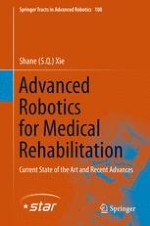2016 | OriginalPaper | Buchkapitel
4. Modelling Human Shoulder and Elbow
verfasst von : Shane (S.Q.) Xie
Erschienen in: Advanced Robotics for Medical Rehabilitation
Aktivieren Sie unsere intelligente Suche, um passende Fachinhalte oder Patente zu finden.
Wählen Sie Textabschnitte aus um mit Künstlicher Intelligenz passenden Patente zu finden. powered by
Markieren Sie Textabschnitte, um KI-gestützt weitere passende Inhalte zu finden. powered by
